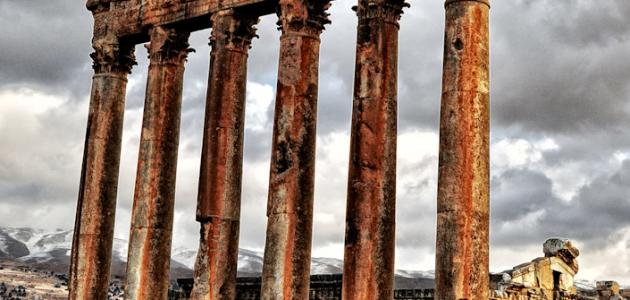Baalbek is located in the northern part of the Bekaa Valley. It is considered the administrative center of Baalbeck, one of the Lebanese cities singing green land and fertility of its lands due to the crossing of the Litani River and thus abundant agricultural crops. The eastern and western mountains range from the eastern and western sides, reaching 1163 meters above sea level and separating them from the Lebanese capital of Beirut at a distance of about 83 kilometers. The name Baalbek refers to the old name mentioned in the Bible, the Bible under the name "Baalbak", and the proportions of the designation to the Semitic origins; Baal refers to the meaning of the owner or master, but the word Baq is a reference to the Bekaa, The valley of the Bekaa valley, known as the city of Baalbek in the city of the sun. The city of Baalbek is influenced by the Mediterranean climate. It is considered the closest to the arid. Its summers are very hot, accompanied by drought, but its winter is relatively cold and sometimes snowy. It has a rainfall of 593 mm annually. Tourism in Baalbeck Baalbeck is one of the most attractive tourist cities in the country because of its Roman heritage. It hosts a number of international festivals and a large number of Arab and foreign artists annually, so the city plays an important role in promoting tourism in the part East of the country. The ruins of Baalbek The temples of Baalbek are considered to be the temples of the great Roman temples. The Romans erected a number of temples for their three gods: Jupiter, Venus and Mercury, but were destroyed by the earthquake in the 6th century. . The rock of pregnant women, a rock that is more than 21 meters long, and weighs almost a thousand tons, a rock was cut parts of them to build a temple two thousand years ago. The shrine of Mrs. Khawla bint Imam al-Hussein, which is frequented by tourists a lot to see alongside the mosque of Umm Ayyad. Kubta Amjad and Doris: These two domes are the remains of collectors built from the stones used in the construction of the temples in the city, and these two domes open to visitors to see a train station dating back to the thirties during the French mandate over the country. The Palmera Hotel, which dates back more than 120 years, has a privileged location overlooking Al Athar Street.
Subscribe to:
Post Comments (Atom)




No comments:
Post a Comment